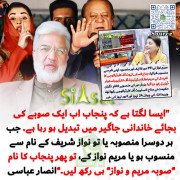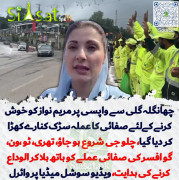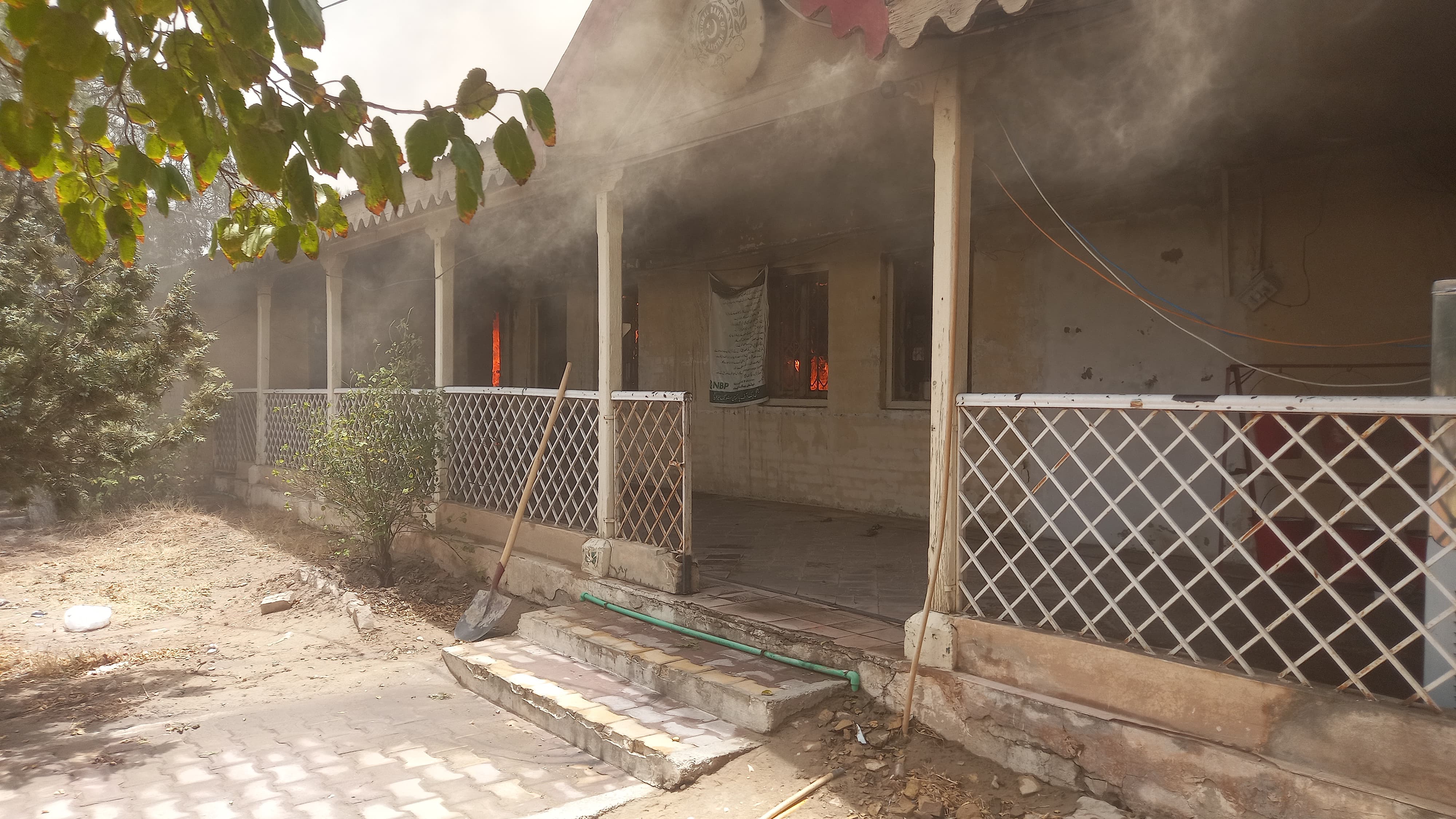Kamran Stu
MPA (400+ posts)
I presume when you say ISIS, Taliban and Al Qaeda, you are referring to all the organisations working under the umbrella of what the world describes as Islamic fundamentalism whose roots are much older than the 1990’s that everyone will have us believe. The main objective of this fundamentalism when it started out was no different than what almost all religions want i.e political control and supremacy and subjugation over humans it controls. You see religion is a very effective tool to keep in check an otherwise wildly free species of humans. At its core it is nothing more than man management. Now we may dwell a little more into what the current corps of Islamic fundamentalists want and what makes them different from others that came before them. The Al-Saud and Wahhabi alliance in the 17th century which made the Al-Saud the most powerful tribe in the Arabian peninsula and ultimately help them carve a wide chunk of the peninsula for themselves wasn't possible without the help of the Wahhabi followers who were the first fundamentalists of modern times. The Saud family kept its end of the bargain for a long time but with the petro dollors flowing in, they thought of breaking free from the shackles. The Muslim brotherhood popular at one time was more upfront and wanted power for themselves unlike the wahabbis. This was a big mistake because they didn't have the mass support at the time. I have no doubt had they been active now, they would have been in power in much of the Arab world.
The Taliban and ISIS are still powerful forces in Afghanistan
Michael Kugelman, opinion contributor

Two recent attacks in Afghanistan — the Taliban’s siege of the Intercontinental Hotel in Kabul on Jan. 20 and ISIS’s attack on a Save the Children office in Jalalabad on Jan. 24 — underscore the deep threat posed by the two main terrorist organizations operating in Afghanistan.
The Taliban and ISIS are highly active, relentlessly violent, and remarkable at defying the odds. Indeed, one of the unsettling realities about Afghanistan these days is that the two groups are so much more potent than one may expect them to be. And there’s precious little that President TrumpDonald John TrumpEx-FBI lawyer won't attend interview with House lawmakers: attorney Trump officials to release migrants with ankle monitors North Korea state media release photos of Kim at potato farm after Pompeo visit MORE’s Afghanistan strategy, as currently articulated, can do about that.
The Taliban, by some measures, should be a spent force. Institutionally, the organization is far from a united front. According to published
interviews with Taliban figures, it’s in a state of disarray. It’s riven by infighting, with different factions sparring over issues ranging from leadership transitions to reconciliation with the Afghan government. Meanwhile, for nearly two decades, Afghan forces and their foreign allies have unleashed withering firepower on the Taliban from air and ground.
Yet today, the Taliban controls or contests 40 percent to 50 percent of Afghanistan’s nearly 400 districts, which is more territory than at any time since U.S. forces entered the country in 2001. Fatality rates for Afghan security forces are soaring. Civilian casualties rates have broken new records. The insurgency has arguably never been more fearsome or ferocious.
The resilience of ISIS is even more striking, given the unfriendly neighbors and unwelcome environment it finds in Afghanistan. Most terror groups in the region of Afghanistan and Pakistan, including the Taliban, are aligned with Al Qaeda, which is ISIS’s enemy. Most of them also adhere to the Deobandi school of Sunni Islam, while ISIS, like Al Qaeda, is strictly Salafist.
Additionally, Afghanistan doesn’t feature the deep sectarian cleavages found in Iraq and Syria. These are divides that sectarian-focused terror organizations like ISIS need in order to thrive. On top of all this, ISIS fighters have been pummeled by Afghan and U.S. firepower, including the infamous “mother of all bombs,” for many months.
And yet today, ISIS retains its stronghold in Nangarhar, the province where the attack on the Save the Children facility took place. Even more alarmingly, it’s established a major physical presence in Kabul. According to Borhan Osman, an International Crisis Group analyst in Afghanistan, ISIS carried out seven bombings in the capital between October and December alone, killing 130 people.
The strength of these two groups can be attributed to a variety of factors. The Taliban insurgency benefits from overmatched Afghan military forces but also an ineffective government. Hampered by debilitating internal and personality-driven disputes, a distracted and capacity-constrained Kabul struggles to provide basic services, including security and jobs. In many rural spaces, the government outsources security responsibilities to local warlords that often terrorize, instead of protect, local communities.
Ultimately, the Afghan government has failed to convince a critical mass of Afghans that it’s a better alternative to the Taliban. All of this helps spark recruitment to the insurgency. To be sure, the Taliban also benefits in a big way from its sanctuaries and other forms of state support in Pakistan, not to mention from infusions of weaponry from Iran and, perhaps, Russia as well. Still, it’s folly to assume that the Pakistani sanctuaries alone account for the Taliban’s strength.
ISIS, meanwhile, stays strong because of a ready infusion of recruits from demoralized regional militants, including Pakistani Taliban fighters pushed into Afghanistan by counterterrorism operations across the border in the North Waziristan region of Pakistan. ISIS also takes advantage of rugged terrain in eastern Afghanistan to evade military strikes. Finally, abysmal conditions in Afghanistan — an explosive stew of ongoing conflict, foreign occupation, poverty, and a general sense of hopelessness — have fueled local radicalizations and produced fresh pools of ISIS recruits.
The implication for U.S. policy is clear: You can’t make terrorism go away in Afghanistan simply by ramping up the fight on the battlefield and shutting down sanctuaries in Pakistan, yet these are the two pillars of the Trump administration’s Afghanistan strategy. Instead, you need accompanying diplomatic and economic components that help address dysfunction within the Afghan government, ease tensions with troublesome regional players, and provide a spark to an economy that has suffered mightily, as growth plummeted from 14 percent in 2012 to 1.5 percent in 2015, since most U.S. forces left in 2014.
The Trump administration has largely cast its strategy in security terms, with security-focused means (stepped-up battlefield operations) being deployed to achieve security-focused ends (an elimination of terror). Without incorporating non-security considerations into Washington’s policy toolkit, those means will be insufficient and the ends unachievable. Failing to make these policy adjustments all but ensures that the relentless and resilient Taliban and ISIS will continue to inflict violence on a nation that has suffered far too much of it, and for far too long.
Source
The Taliban and ISIS are still powerful forces in Afghanistan
Michael Kugelman, opinion contributor

Two recent attacks in Afghanistan — the Taliban’s siege of the Intercontinental Hotel in Kabul on Jan. 20 and ISIS’s attack on a Save the Children office in Jalalabad on Jan. 24 — underscore the deep threat posed by the two main terrorist organizations operating in Afghanistan.
The Taliban and ISIS are highly active, relentlessly violent, and remarkable at defying the odds. Indeed, one of the unsettling realities about Afghanistan these days is that the two groups are so much more potent than one may expect them to be. And there’s precious little that President TrumpDonald John TrumpEx-FBI lawyer won't attend interview with House lawmakers: attorney Trump officials to release migrants with ankle monitors North Korea state media release photos of Kim at potato farm after Pompeo visit MORE’s Afghanistan strategy, as currently articulated, can do about that.
The Taliban, by some measures, should be a spent force. Institutionally, the organization is far from a united front. According to published
interviews with Taliban figures, it’s in a state of disarray. It’s riven by infighting, with different factions sparring over issues ranging from leadership transitions to reconciliation with the Afghan government. Meanwhile, for nearly two decades, Afghan forces and their foreign allies have unleashed withering firepower on the Taliban from air and ground.
Yet today, the Taliban controls or contests 40 percent to 50 percent of Afghanistan’s nearly 400 districts, which is more territory than at any time since U.S. forces entered the country in 2001. Fatality rates for Afghan security forces are soaring. Civilian casualties rates have broken new records. The insurgency has arguably never been more fearsome or ferocious.
The resilience of ISIS is even more striking, given the unfriendly neighbors and unwelcome environment it finds in Afghanistan. Most terror groups in the region of Afghanistan and Pakistan, including the Taliban, are aligned with Al Qaeda, which is ISIS’s enemy. Most of them also adhere to the Deobandi school of Sunni Islam, while ISIS, like Al Qaeda, is strictly Salafist.
Additionally, Afghanistan doesn’t feature the deep sectarian cleavages found in Iraq and Syria. These are divides that sectarian-focused terror organizations like ISIS need in order to thrive. On top of all this, ISIS fighters have been pummeled by Afghan and U.S. firepower, including the infamous “mother of all bombs,” for many months.
And yet today, ISIS retains its stronghold in Nangarhar, the province where the attack on the Save the Children facility took place. Even more alarmingly, it’s established a major physical presence in Kabul. According to Borhan Osman, an International Crisis Group analyst in Afghanistan, ISIS carried out seven bombings in the capital between October and December alone, killing 130 people.
The strength of these two groups can be attributed to a variety of factors. The Taliban insurgency benefits from overmatched Afghan military forces but also an ineffective government. Hampered by debilitating internal and personality-driven disputes, a distracted and capacity-constrained Kabul struggles to provide basic services, including security and jobs. In many rural spaces, the government outsources security responsibilities to local warlords that often terrorize, instead of protect, local communities.
Ultimately, the Afghan government has failed to convince a critical mass of Afghans that it’s a better alternative to the Taliban. All of this helps spark recruitment to the insurgency. To be sure, the Taliban also benefits in a big way from its sanctuaries and other forms of state support in Pakistan, not to mention from infusions of weaponry from Iran and, perhaps, Russia as well. Still, it’s folly to assume that the Pakistani sanctuaries alone account for the Taliban’s strength.
ISIS, meanwhile, stays strong because of a ready infusion of recruits from demoralized regional militants, including Pakistani Taliban fighters pushed into Afghanistan by counterterrorism operations across the border in the North Waziristan region of Pakistan. ISIS also takes advantage of rugged terrain in eastern Afghanistan to evade military strikes. Finally, abysmal conditions in Afghanistan — an explosive stew of ongoing conflict, foreign occupation, poverty, and a general sense of hopelessness — have fueled local radicalizations and produced fresh pools of ISIS recruits.
The implication for U.S. policy is clear: You can’t make terrorism go away in Afghanistan simply by ramping up the fight on the battlefield and shutting down sanctuaries in Pakistan, yet these are the two pillars of the Trump administration’s Afghanistan strategy. Instead, you need accompanying diplomatic and economic components that help address dysfunction within the Afghan government, ease tensions with troublesome regional players, and provide a spark to an economy that has suffered mightily, as growth plummeted from 14 percent in 2012 to 1.5 percent in 2015, since most U.S. forces left in 2014.
The Trump administration has largely cast its strategy in security terms, with security-focused means (stepped-up battlefield operations) being deployed to achieve security-focused ends (an elimination of terror). Without incorporating non-security considerations into Washington’s policy toolkit, those means will be insufficient and the ends unachievable. Failing to make these policy adjustments all but ensures that the relentless and resilient Taliban and ISIS will continue to inflict violence on a nation that has suffered far too much of it, and for far too long.
Source
- Featured Thumbs
- https://fa.shafaqna.com/media/2017/06/n00095781-b.jpg
























